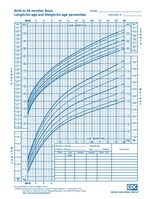
Photo from wikipedia
BACKGROUND In Africa, little is known about the epidemiological significance of vitamin B12 deficiency. OBJECTIVE To analyze regional and country-specific trends (1990-2017) in vitamin B12 supply in Africa and estimate… Click to show full abstract
BACKGROUND In Africa, little is known about the epidemiological significance of vitamin B12 deficiency. OBJECTIVE To analyze regional and country-specific trends (1990-2017) in vitamin B12 supply in Africa and estimate the prevalence of inadequate intake. METHODS National food balance data compiled by Food and Agriculture Organization for 45 African countries were used. Per capita food supplies for 95 commodities were transformed into B12 contents (µg/capita/day) assuming no fortification and B12 density was determined per 1000 kcal. Estimated Average Requirement cut point method was used for estimating the prevalence of inadequate intake. RESULTS Over the period, the mean per capita B12 supply in Africa significantly increased by 12.7% from 2.02 to 2.27 µg/capita/day (z = 5.27, P < .001). However, the B12 density remained below the reference goal of 0.8 µg/1000 kcal. In 2017, the B12 supplies (µg/capita/day) in Northern (3.52), Central (3.15), and Southern Africa (2.99) were considerably higher than Western (2.10) and Eastern Africa (1.36) regions. The supply in upper-middle- or high-income countries (3.21) was also substantially higher than low- (1.58) and low-middle-income (2.58) countries. In 2017, the B12 supplies ranged from 5.95 in Mauritius to 0.66 in Ethiopia. Similarly, the nutrient density extended from 1.88 in Gambia to 0.28 in Ethiopia. In Africa, the estimated prevalence of inadequate intake declined from 48.1% in 1990 to 29.9% in 2007 and resurged to 40.6% in 2017. In 2017, the prevalence of inadequate intake was nearly universal (>90%) in 4 countries and exceeded 50% in 8 more countries. CONCLUSION Many African countries have major deficits in vitamin B12 supply.
Journal Title: Food and nutrition bulletin
Year Published: 2021
Link to full text (if available)
Share on Social Media: Sign Up to like & get
recommendations!